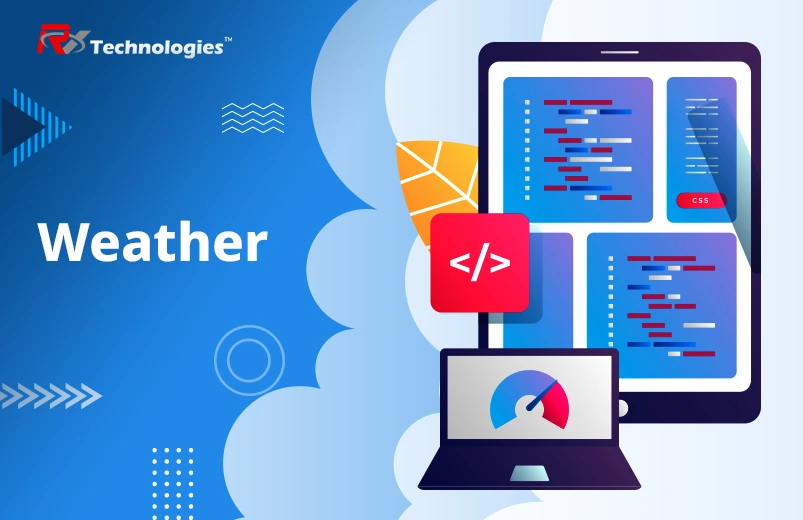If you belong to the mobile application development world, you might be familiar with APIs. API or Application Programming Interface is a set of codes included in an app to allow seamless communication with third-party apps.
Mobile APIs are being extensively used as we rely more and more on mobile apps to get things done. As a result, they have become an integral part of the modern-day app development process and can be found in almost every mobile app.
For example, Uber or other ride-sharing apps use Google Maps API to fetch the user’s location. Similarly, most games ask players to log in using their Facebook accounts. The app uses the Facebook API to garner user credentials.
There are countless other APIs being used to enable easy connection and communication between two apps.
From a technical and development perspective, all APIs for mobile apps follow a standard template and are fairly easy to understand.
A vast number of APIs are available in the market. Developers generally use REST API for mobile app development purposes. Choosing the right API to make the app more useful and powerful can be confusing.
Top 10 Best APIs for Mobile Development
This blog discusses the ten best APIs for mobile development to simplify the mobile app development process for developers.
1. Google Maps

Google Maps has been the undisputed king in mobile maps and navigation. The tech giant has been known to provide accurate locations with Google Maps.
If your application relies on user location for functioning, the Google Maps Mobile API is your best choice. The API provides all the much-loved features of the Google Maps mobile app, such as navigation, location, routing, street view, and traffic conditions.
The API is outstanding for an app that has anything to do with maps. Many popular apps use Google Maps API for their functioning. For example, Uber and Lyft use it to connect drivers with riders.
The Google Maps API for mobile development is open to the public, receives regular updates, and provides highly-accurate location data. The API is available for iOS, Android, web, and on-demand app development purposes.
2. Foursquare Places
Foursquare Places is another powerful API that offers local search and discovery services.
Users can easily check into various local places like restaurants, hotels, cafes, and others using this API. The business information is shared in real-time.
The API also provides other app APIs like Core API, Merchant, and Venues Platforms. In addition, Foursquare is available as a RESTful API and supports XML, JSON, and JSONP formats.
3. Weather

The Weather App API provides reliable and accurate weather data on a real-time basis.
Real-time weather information is critical for professionals working in logistics, agriculture, utility, transportation, and many other sectors.
It can help prevent operational delays, mishaps, or accidents. In addition, professionals can take appropriate decisions based on the weather situation.
Moreover, the API also provides future weather forecasts. This helps in planning and scheduling operations well ahead of time.
Lastly, weather API can provide updates about the weather of multiple locations. This, again, helps improve the efficiency of the processes.
For example, a logistics company having weather information regarding the delivery item’s source and destination can better plan the delivery process.
You can get more information about the OpenWeather app mobile API here.
4. Gmail
Gmail is the de-facto email service used by billions of users across the globe. The Gmail API helps you easily send and receive emails over your mobile or web apps.
The Gmail REST API- The REST API for mobile apps can be easily integrated within your app and provides cross-platform support. Users can easily send and receive emails from any third party without switching to the Gmail app.
The Gmail Mobile API- Mobile API allows users to seamlessly share Google Docs, images, videos, presentations, links, and more. What’s more, users can save their important emails and chats with friends, among other things.
5. Facebook
The facebook API is one of the most popular and widely used APIs for mobile apps.
The API allows apps to access users’ Facebook profile details based on their privacy and security settings.
As a result, it helps create a more connected experience and can prove helpful with targeted marketing purposes.
The API allows apps to access the user’s name, Facebook profile picture, birth date, gender, contact list, photos, videos, and other bits of information.
Based on the information collected, developers can easily conduct customer profiling to market their products and services better.
For example, the developers of an eCommerce business can carry out customer profiling by gathering data through Facebook API.
Then, they can use the information to show relevant products based on the customer’s age, gender, and interests.
The Facebook API for mobile application development is available in four categories. They are:
1. Facebook Ads
2. Facebook Marketing
3. Facebook Atlas
4. Facebook Graph
The Facebook API uses RESTful protocol, and the responses are sent in JSON format. You can read the documentation related to Facebook APIs here to know more.
6. Amazon AWS
The Amazon AWS API provides a complete back-end solution to developers. It provides access to features like data storage, analytics, and verification tools, to name a few.
However, the biggest advantages for developers in using the Amazon AWS API are seamless deployment and easy scalability. They can easily scale the API services when the demand increases and vice versa.
The Amazon AWS mobile APIs are also highly flexible. Developers need to only pay for services that they are using.
This helps the developers save a huge amount of money and frees them from managing the services that are not required.
7. Google Analytics
Google Analytics API is an amazing and powerful API for mobile apps provided by the tech giant Google. The API provides detailed insights that can help improve your services.
For example, the Google Analytics API allows developers to create separate campaigns for mobile apps based on demographics and keyword targets.
In addition, the API provides information about how each campaign is performing and what aspects of it are most liked by the target audience.
Moreover, the API is also highly customizable. Developers can choose the fields for which they require user analytics.
The Google Analytics API is a cross-platform API and can be used for mobile and web apps.
8. Firebase
The Firebase API has seen constant and tremendous growth since its launch in 2012. This is largely due to the real-time synchronization feature of the API.
This feature proves highly beneficial for businesses that rely on data capturing and analyzing with zero latency.
The API also provides integration for third-party apps. This means that developers can easily use REST APIs on Firebase.
9. Oxford Dictionaries
The Oxford Dictionaries API provides developers with access to world-renowned dictionary data.
This includes word definitions, audio pronunciations, and translations.
The API is perfect for developers looking to build a language-learning application, game, or speech and text technology.
Many major businesses like Google, Facebook, and Microsoft use the Oxford Dictionaries API. The basic API is free to use, and the paid versions provide extra functionalities.
You can know more about the Oxford Dictionaries API by reading the documentation here.
10. Kinvey
Kinvey was originally developed for businesses and large organizations.
As a result, it is one of the most user-friendly APIs available. It provides app analytics, data storage, and file transfer, among many others.
Additionally, Kinvey also provides custom code compatibility. Users can easily connect their devices to the cloud.
There are four different versions of the Kinvey API: Individual, Business, Startup, and Enterprise. The Individual version is free, while the rest are paid versions.
These were our list of the ten best APIs for mobile application development.
APIs have become an integral part of the mobile app development process and enable developers to provide their services effectively and efficiently.
You can learn more information about the Kinvey API here.
Now, let’s look at some of the best practices you need to follow while integrating APIs into your app.
API Integration Best Practices

API integration needs to be done properly and correctly. If proper practices are not followed, it can result in poor application performance. Thus, you need to follow the following API integration practices.
1. Review API documentation carefully.
You need to go through the API documentation in-depth to leverage the API functionality fully.
The documentation provides critical, valuable information such as the API’s usage, limitations, input, data output, and other details.
Armed with this information, developers can integrate the API correctly into their applications and make the most out of it.
2. Choose Reliable, Trusted APIs.
There are thousands of APIs available in the market. However, not every API is secure, functional, and reliable.
Thus, to ensure no issues with API integration and functionality, you need to choose an API with a good reputation.
Selecting an unreliable, poorly-maintained, and untested API can lead to app performance issues. This can lower the quality of user experience and lead to business losses.
You can choose any of the APIs mentioned above depending on your use case. These APIs are highly reliable and won’t cause any problems.
3. Check the security of the APIs
You will need to audit the API for security vulnerabilities. Some reliable APIs provide high security, including data encryption and protection features.
On the other hand, the others that don’t focus on security are easily prone to attacks.
Thus, to ensure that the API you are selecting is safe and secure against threats, you will need to analyze its security functionalities.
4. Check the API scalability

As your business grows, so does your app. You will need to choose an easily scalable API that can grow along with your business. You wouldn’t want to switch to a new API every few months or years as your business expands.
5. API Implementation Strategy
It is advisable to have an API integration strategy prepared in advance. This helps smoothen and fast-track the app development process. You need to follow some steps to ensure successful and seamless API integration.
6. Set clear goals and benchmarks
It would help if you had a clear understanding of what you want to achieve with the API integration. Create a definitive roadmap and KPIs that can help you track progress through the software development stage, including API integration.
7. Understand your current IT environment
You must know your current IT infrastructure if you carry out the software development process in-house.
Decide how the API integration needs to be done and what needs to be connected
You need to have a clear vision regarding what app functions and features need to be connected with the API. It would help if you also had clarity regarding connecting the API with the app.
8. Test the API integration
Lastly, you need to check whether everything is working as intended. You can carry out testing using automated or manual methods.
Conclusion
This was our list of the ten best APIs for mobile application development. You can choose an API depending on your app needs.
We also provided API integration best practices and an effective API integration strategy.
We hope that they will help you smoothly carry out the API integration and app development process.





 Updated: June 24, 2022
Updated: June 24, 2022 






